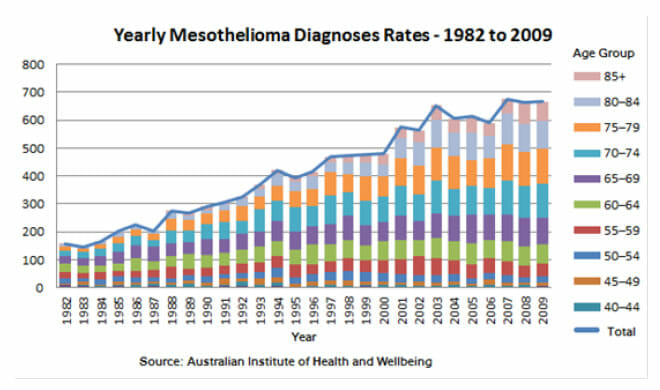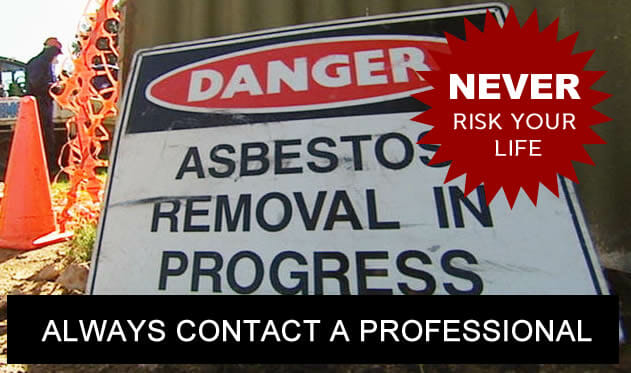Handling Asbestos – A Proven Health Risk
Asbestos is one of the most toxic building materials in Australia. A slight exposure to asbestos fibres can trigger life-long health complications and illnesses. Statistics indicate (Source: The Australian Institute of Health and Well Being ) that 40,000 Australians will exposed to asbestos and develop Asbestos-related illnesses in the next four decades. Since asbestos is lethal, we’ll shed some light on the dangers of asbestos, the resulting health complications that arise from asbestos exposure, the do’s and don’ts of handling asbestos, and the best way of handling it.

Why is asbestos dangerous?
Asbestos is a carcinogenic and naturally-occurring material that is commonly used in buildings in Australia. While asbestos has many useful properties, it is highly toxic and insidious in nature. Asbestos s dangerous because it has fibres which disintegrate and intoxicate the air we breathe. When asbestos fibres are inhaled, they trigger various health complications and illnesses which we shall look at in the next section.
Asbestos-induced illnesses
As a toxic substance, asbestos induces debilitating and life-long health complications and illnesses. Most of these illnesses cannot be diagnosed early because symptoms don’t manifest quickly. If you are concerned about the effects of asbestos, then you need to be aware of the following four major illnesses caused by prolonged exposure to asbestos.
-
Mesothelioma
A pernicious form of cancer which affects the lining of the lungs, abdomen (lower digestive tract), and the heart. Mesothelioma manifests a variety of symptoms such as acute shortness of breast, chest pain, and blood in sputum. This form of cancer arises almost exclusively from heavy exposure to asbestos and more often than not, it is fatal. Individuals who work in the construction or building industry face the highest risk of developing mesothelioma.
-
Asbestos-related lung cancer
This is a form of lung cancer that results from heavy exposure to asbestos fibres. The fatality rate of this cancer is equal to that of mesothelioma.
-
Asbestosis
A serious health complication that causes the scarring of the lungs. Like the two foregoing cancers, it results from heavy exposure to asbestos fibres for many years. Asbestosis causes progressive shortness of breath, and extreme cases, it is fatal.
-
Pleural thickening
this health complication occurs when a person is exposed to heavy doses of asbestos. Pleural thickening causes the lining of the lung (pleura) to thicken and swell and induces acute shortness of breath and discomfort.
Unlike fast-acting disease-causing pathogens, asbestos triggers illnesses gradually over time. Most of the diseases associated with asbestos develop after 15-20 years. Since the asbestos induced-illnesses are gradual, the symptoms and effects are not be felt immediately. It’s only after the disease has developed that the victims realize what ails them.
Do’s and don’ts of handling asbestos
If you believe that you have found asbestos in your home or workplace, do not touch it. Asbestos materials contain fibres which can be disintegrate when disturbed. So, it’s better that you leave it intact until a professional comes and removes it. You should also visually inspect materials in your home or workplace from time to time to ensure that they have not damaged or deteriorated. Alternatively, you should consider safer options of dealing with asbestos such as painting, sealing, or covering it instead of handling it. Do not use abrasive discs, compressed air, or power tools in an environment which has asbestos materials. If you come across a suspected asbestos material, it is advisable to call NATA-accredited laboratory technicians to come and test and ascertain the nature of the material. If you are an employer, you should ensure that you comply fully with the laws and safety procedures that stipulate how asbestos should be handled in the workplace.
Professional handling and removal of asbestos

If you have loosely-bound asbestos in your home or workplace, you should not handle or remove it. Any form of contact or exposure to asbestos, however slight it is, can lead to serious health complications in future. Instead of putting your health at risk, call licensed and experienced professional asbestos handling and removal experts to undertake swift and thorough removals. The reason is that licensed asbestos removal experts have the requisite skills and tools to handle, package, transport, and dispose contaminated materials safely. Warning: Do not attempt to handle or remove asbestos or any contaminated material yourself. You could expose yourself, your family, and even neighbours to the toxic asbestos fibres. We strongly urge you to contact licensed professionals to handle any loosely bound asbestos material. If you are unsure about the possibility of having asbestos on your property and are a resident of Brisbane please call 07 3062 7676 for a free onsite inspection.
If you are located in other parts of Australia please contact your local asbestos removal contractors.

Hi Brendon, great article on asbestos, thanks for helping spread the word on the dangers. we see allot of people curious about what they can and can’t do when handling asbestos. We always recommend property owners to get an independent test done on the affected area, there are a few labs in Brisbane now who specialise in testing. Our company can also perform tests if any of your readers are interested in finding out more, just visit http://www.iasbestosremovalbrisbane.com.au/ for more details about testing and handling of asbestos. Thanks again for posting and iof you need any advice or have questions pleas drop me a line through out website, Regards, John Timble